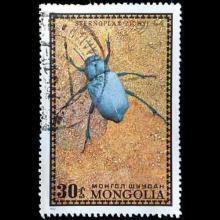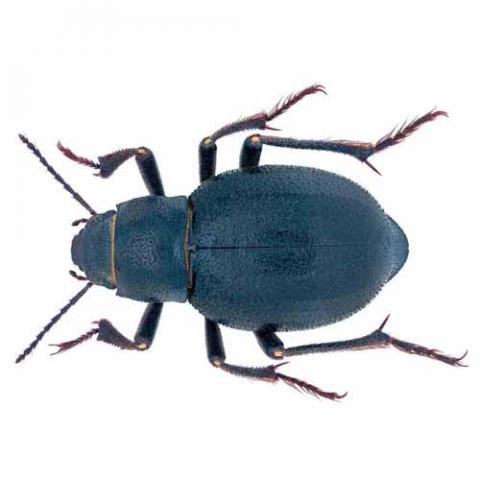NAMES
TAXONOMY
Mongolia
Issued:
Stamp:
Sternoplax zichyi
Mongolia
Issued:
Stamp:
Sternoplax zichyi
Mongolia
Issued:
Stamp:
Sternoplax zichyi
Genus species (Animalia): Sternoplax zichyi
Sternoplax zichyi (Darkling beetle), also called darkening beetles are a family of beetles which include approximately 20,000 species worldwide, 70 of which are found in Central Europe. Some examples are: the mealworm beetle, superworm, Blaps mortisaga, Blaps lethifera, Onymacris plana, Namib Desert beetle, Pedinus femoralis, Opatrum sabulosum, Phaleria cadaverina, Diaperis boleti, Scaphidema metallicum, Confused flour beetle, Alphitobius diaperinus, Gnathocerus cornutus and Uloma culinaris.
Darkling beetles are 1 to 100 mm in length. Their body shape varies. They are easily confused with beetles from other families. They range in shape from broad, oval and round to long and flat. The beetle can be completely black in colour, black-brown, brown or reddish-yellow. Some species have dots. While the neck shield is mostly the same breadth, the wing covers vary, in some species they are fused together and the second pair of wings is shortened. The antennae comprise 11 parts. Some species have defence glands at the end of their abdomen with which they can exude malodorous secretions. The beetle larvae are long, round and yellowish in color.
Darkling beetles prefer hot and sandy habitats (deserts, steppes (large areas of flat unforested grassland). They are tyically encountered in dead wood, bark, straw, hay, leaves, tree fungi , abandoned nests, and even in buildings.
Both adult and darkling beetle larvae are herbivores or omnivores. They often live in in the company of other darkling beetles and feed on rotting plants, seeds, mushrooms or dead insects. Darkling beetles can cause major damage at food warehouses (Larvae of Meal worm beetles).
Reference: Insectoid.info


